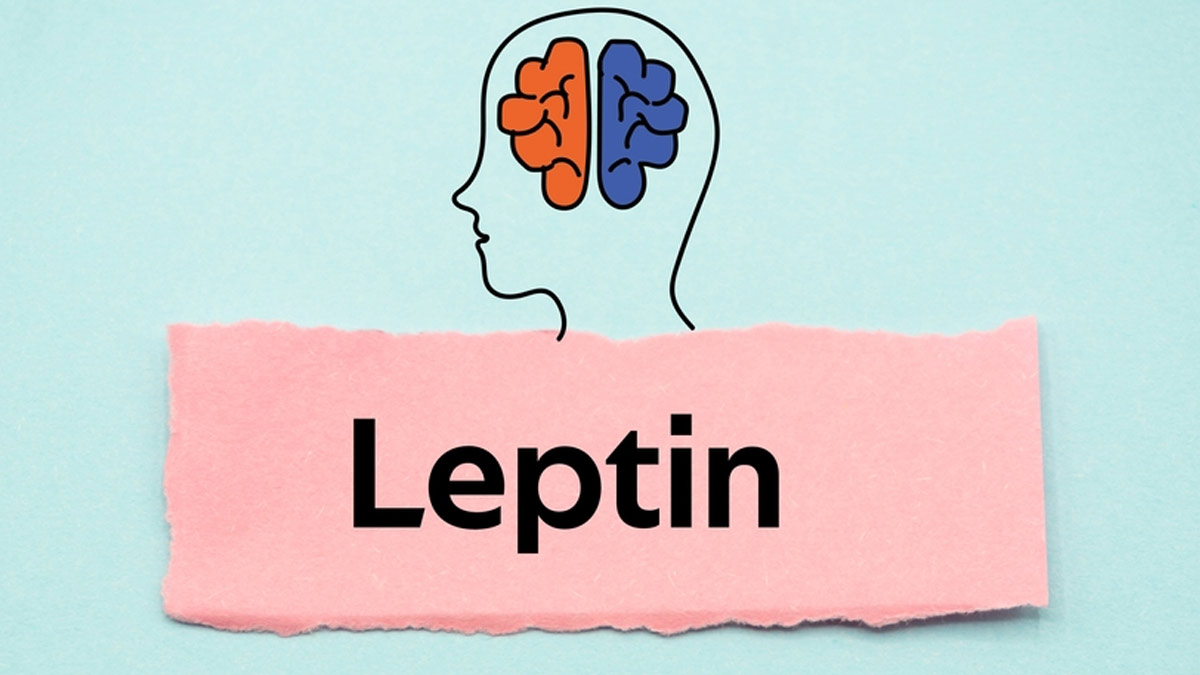
The intricate biological system governing energy balance is frequently discussed, but often simplified into a caloric equation of input versus output. Central to this system is the hormone leptin, a signaling molecule secreted predominantly by adipose tissue, whose primary role is to inform the brain—specifically the hypothalamus—about the body’s long-term energy stores. When fat reserves are sufficient, leptin levels rise, signaling satiety and promoting energy expenditure by inhibiting appetite-stimulating neurons and activating energy-burning pathways. In theory, more body fat should mean more leptin, which should then lead to less eating and better weight control. However, a stark and confusing paradox emerges: the vast majority of individuals struggling with obesity exhibit dramatically elevated leptin levels, a state known as hyperleptinemia. Instead of suppressing appetite, this high concentration of the satiety hormone seems to be entirely ineffective, a condition now commonly termed leptin resistance. Understanding this failure is less about a simple hormonal deficiency and more about dissecting a systemic signaling breakdown that spans the blood-brain barrier, cellular communication pathways, and a complex feedback loop involving chronic inflammation. This is not merely a consequence of excess weight; it is a critical, often foundational, metabolic derailment that actively drives persistent weight gain and complicates therapeutic interventions.
This is not merely a consequence of excess weight; it is a critical, often foundational, metabolic derailment that actively drives persistent weight gain and complicates therapeutic interventions.
The vast majority of individuals struggling with obesity exhibit dramatically elevated leptin levels, a state known as hyperleptinemia.
The fundamental issue in leptin resistance is not a lack of the hormone but rather the inability of the hypothalamic leptin receptor (LepRb) to properly interpret its signal. This is not merely a consequence of excess weight; it is a critical, often foundational, metabolic derailment that actively drives persistent weight gain and complicates therapeutic interventions. Consider the process as a three-part failure. The first point of failure is often the blood-brain barrier (BBB) transport mechanism. Leptin must be actively transported from the bloodstream into the hypothalamus, and elevated levels of circulating molecules, particularly triglycerides—common in high-fat, high-sugar diets—have been shown to impair this transport system, effectively preventing the leptin from reaching its target neurons. This means the satiety signal is strong systemically, yet the command center in the brain remains largely unaware of the body’s full energy stores. Secondly, a more localized issue, cellular leptin resistance, occurs directly within the hypothalamic neurons. Here, the binding of leptin to its receptor, which is supposed to initiate the JAK2-STAT3 signaling cascade for satiety, is blocked. Inhibitory proteins like Suppressor of Cytokine Signaling 3 (SOCS3) are often overexpressed, acting as molecular brakes that prevent the signal from propagating effectively. This intrinsic cellular resistance effectively silences the message even if the hormone manages to cross the BBB.
This means the satiety signal is strong systemically, yet the command center in the brain remains largely unaware of the body’s full energy stores.
Elevated levels of circulating molecules, particularly triglycerides—common in high-fat, high-sugar diets—have been shown to impair this transport system, effectively preventing the leptin from reaching its target neurons.
The most potent and insidious driver of this hypothalamic desensitization appears to be a state of chronic, low-grade inflammation, frequently referred to as meta-inflammation. This means the satiety signal is strong systemically, yet the command center in the brain remains largely unaware of the body’s full energy stores. It is now clear that this inflammation begins in the hypothalamus itself, often very early in the course of consuming a high-fat diet, sometimes even preceding significant weight gain. This is not the acute inflammation of an injury; rather, it is a persistent activation of inflammatory pathways—such as the JNK and IKK pathways—within the brain’s energy-regulating center. These pathways are intimately involved in disrupting the leptin signaling cascade, promoting the expression of inhibitory proteins like SOCS3, and inducing cellular stress. Furthermore, this localized neuroinflammation leads to changes in supportive brain cells, like astrocytes and microglia (a type of immune cell in the brain), transforming them into a reactive state that further compounds the signaling failure. The relationship is a self-reinforcing, destructive loop: high body fat generates high leptin; high leptin, especially in a state of selective resistance, may itself be proinflammatory; and this chronic inflammation directly cripples the brain’s ability to respond to the leptin, thereby perpetuating overeating and fat storage.
This is not the acute inflammation of an injury; rather, it is a persistent activation of inflammatory pathways—such as the JNK and IKK pathways—within the brain’s energy-regulating center.
The most potent and insidious driver of this hypothalamic desensitization appears to be a state of chronic, low-grade inflammation, frequently referred to as meta-inflammation.
Beyond diet and cellular mechanics, there are complex lifestyle and environmental factors that consistently undermine the brain’s sensitivity to leptin. This is not the acute inflammation of an injury; rather, it is a persistent activation of inflammatory pathways—such as the JNK and IKK pathways—within the brain’s energy-regulating center. One such factor, often overlooked, is the disruption of the body’s circadian rhythm. Leptin levels naturally fluctuate throughout the day, typically peaking during the night to signal satiety during sleep. Chronic sleep deprivation, shift work, or an inconsistent sleep schedule throws this natural rhythm into chaos. Research suggests that this circadian desynchrony can directly trigger or exacerbate leptin resistance. The body interprets poor sleep as a stressor, which often leads to elevated glucocorticoid (cortisol) levels. Excess cortisol has been demonstrated to reduce the brain’s sensitivity to leptin, not only by impairing signaling but also by encouraging the storage of fat, thereby creating a physiological environment that actively resists the satiety message.
Research suggests that this circadian desynchrony can directly trigger or exacerbate leptin resistance.
One such factor, often overlooked, is the disruption of the body’s circadian rhythm.
Another area of emerging, compelling research focuses on the health of the gastrointestinal tract, specifically the gut microbiome. Research suggests that this circadian desynchrony can directly trigger or exacerbate leptin resistance. The composition of the gut bacteria in obese and metabolically unhealthy individuals often differs significantly from that of lean, healthy counterparts. This imbalance, or dysbiosis, is thought to contribute to leptin resistance through several routes. For example, certain bacterial byproducts can compromise the integrity of the intestinal barrier, leading to a condition known as “leaky gut.” This allows bacterial toxins and pro-inflammatory molecules to enter the bloodstream, traveling to the liver and eventually the hypothalamus, where they fuel the chronic neuroinflammation already mentioned. A diet rich in processed foods, refined carbohydrates, and unhealthy fats actively feeds the less beneficial strains of gut bacteria, thus creating a feed-forward mechanism that promotes both systemic and central leptin resistance.
A diet rich in processed foods, refined carbohydrates, and unhealthy fats actively feeds the less beneficial strains of gut bacteria, thus creating a feed-forward mechanism that promotes both systemic and central leptin resistance.
Another area of emerging, compelling research focuses on the health of the gastrointestinal tract, specifically the gut microbiome.
Given the complex, multi-layered nature of this resistance, the idea of a simple pharmacological “leptin sensitizer” remains elusive, and current strategies focus on a holistic reversal of the underlying causes. A diet rich in processed foods, refined carbohydrates, and unhealthy fats actively feeds the less beneficial strains of gut bacteria, thus creating a feed-forward mechanism that promotes both systemic and central leptin resistance. Nutritional intervention is paramount, with an emphasis on foods that actively reduce inflammation and lower circulating triglycerides, thereby helping to clear the path for leptin to cross the blood-brain barrier. This generally means a diet rich in omega-3 fatty acids (from sources like fatty fish), fiber (from whole, non-starchy vegetables and certain whole grains), and lean protein. The reduction of fructose and other added sugars is also non-negotiable, as they are strongly implicated in promoting both high triglycerides and the hepatic inflammation that often precedes central resistance.
The reduction of fructose and other added sugars is also non-negotiable, as they are strongly implicated in promoting both high triglycerides and the hepatic inflammation that often precedes central resistance.
Nutritional intervention is paramount, with an emphasis on foods that actively reduce inflammation and lower circulating triglycerides, thereby helping to clear the path for leptin to cross the blood-brain barrier.
In addition to dietary changes, the deliberate incorporation of physical activity and the meticulous management of the sleep-wake cycle represent powerful non-pharmacological avenues for restoring leptin sensitivity. The reduction of fructose and other added sugars is also non-negotiable, as they are strongly implicated in promoting both high triglycerides and the hepatic inflammation that often precedes central resistance. Regular exercise, particularly a combination of aerobic and resistance training, appears to work through multiple positive pathways. It can directly improve insulin sensitivity—a condition that often coexists with leptin resistance—and it can also downregulate the expression of key inflammatory markers, thus soothing the agitated hypothalamic environment. Moreover, exercise creates a metabolic demand that may reset the cellular energy state, which in turn can favorably modulate the signaling pathways that have become blocked. A consistent regimen of seven to nine hours of quality, uninterrupted sleep, aligned with the natural dark-light cycle, is equally critical, as it allows the body’s endogenous hormonal rhythms to normalize and reduces the systemic stress that undermines the leptin message.
Regular exercise, particularly a combination of aerobic and resistance training, appears to work through multiple positive pathways.
The deliberate incorporation of physical activity and the meticulous management of the sleep-wake cycle represent powerful non-pharmacological avenues for restoring leptin sensitivity.
The journey toward correcting leptin resistance is fundamentally a process of dismantling the metabolic conditions that caused it, a shift from viewing the problem as a willpower failure to recognizing it as a nuanced biological communication breakdown. Regular exercise, particularly a combination of aerobic and resistance training, appears to work through multiple positive pathways. The therapeutic focus moves away from simply trying to reduce body weight—a symptom—to actively healing the hypothalamic signaling pathways and reducing the systemic inflammatory burden. By addressing the root causes of BBB impairment, cellular inhibition, and neuroinflammation through comprehensive lifestyle modifications, individuals may begin to re-establish the crucial conversation between their fat stores and their brain, allowing the satiety signal to finally be heard and the body’s natural set point to normalize.
The therapeutic focus moves away from simply trying to reduce body weight—a symptom—to actively healing the hypothalamic signaling pathways and reducing the systemic inflammatory burden.
The journey toward correcting leptin resistance is fundamentally a process of dismantling the metabolic conditions that caused it, a shift from viewing the problem as a willpower failure to recognizing it as a nuanced biological communication breakdown.
It is imperative that this complex interplay of hormonal signals, inflammation, and central nervous system function be interpreted not as a definitive failure, but as an opportunity for targeted metabolic repair. The therapeutic focus moves away from simply trying to reduce body weight—a symptom—to actively healing the hypothalamic signaling pathways and reducing the systemic inflammatory burden. The high circulating levels of leptin should be seen as a desperate, unheard cry for help from the fat cells, rather than a successful signaling event. Restoring the brain’s ability to respond to its own signals—re-sensitizing the hypothalamus—is arguably the most profound change an individual can make to achieve sustained metabolic health and exit the destructive cycle of chronic hyperleptinemia and weight regain.
